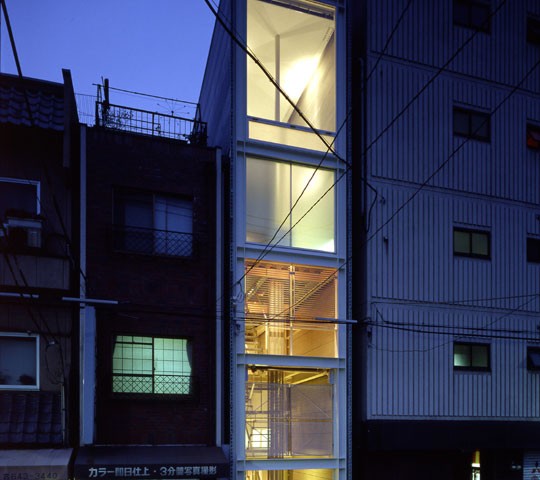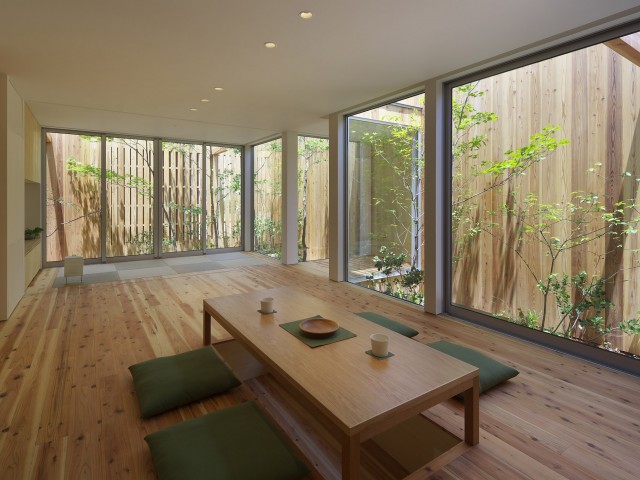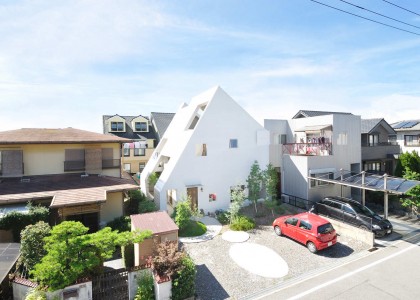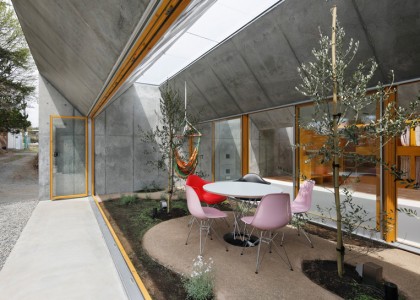Project Info
- Architects: ALPHAVILLE Architects
- Team: Kentaro Takeguchi + Asako Yamamoto
- Location: Osaka, Osaka Prefecture
- Photographs: Kai Nakamura
- Function: Houses
- Completion: 2011
- Structure: Reinforced concrete
- Floor area: 102.03 m² (3F)
- Material: Concrete, Wood
HOUSE FOLDED | ALPHAVILLE Architects
Words by mooponto Staff
June 24, 2012
This is a 100 m² residence for a couple and their cats located in Osaka, Japan. The typical method for designing a house would assign rectangular rooms with specific functions and lay them out. Such a design produces a series of rooms of similar size and causes monotonous spatial experiences. Our approach was to avoid the conventional design practice and to create a structurally rational but spatially heterogeneous house.
On the assumption that there is a human being within the optimal spatial coordinates resulted from the site and living requirements, we used Voronoi line segments that divide equally the shortest distance to create spaces.
The actual trial and error involved the full use of 3D-CAD. First, the center wall bent in two divides the site diagonally and two-dimensionally on the first floor and straight on the third floor. Next, the floors were skipped, and the building’s shape was squashed in a parallelogram in order to keep an adequate distance from the site’s borders. The final step was to slope the roof. In this way, various spaces came to be created so that continuous changes can be experienced as one moves along or through the bent wall.
The slit aperture that runs from the first to the third floor introduces natural light through the highly rational structure with minimum wall girders. At the same time, it brings indirect light to the other side of the wall. While the space along the wall is an interior space filled with light from the outside, it is also an outdoor-like space with a view of the window as if looking from the outside.
We imagined a life in a building situated in a medium-density city where multiple buildings are connected via exterior in a loose relationship among man, building, and nature, unlike in a city where each building is confined to each specific site. In that sense, although what we proposed here is a single-family house, this design model is also applicable to larger buildings such as collective housings, offices, or multi-use complexes in a rational and versatile way.






















































